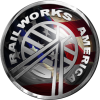Some locomotive control stands work properly and have the brake cylinder pressure gauge set up correctly. Applying the independent brakes more than the automatic train brakes increases locomotive brake cylinder pressure. Note that there should be a maximum brake cylinder pressure, depending on type and number of brake shoes. Since there is no bail off programmed in the core game engine, one cannot release the locomotive brakes below train brake application. But running light engines or switching w/o air on the cars can now be done with the independent brake alone.
The engineer will have to guess brake cylinder pressure and hence retardation force in the train behind him by triple valve ratio: 1 psi reduction gives 2.5 psi in the cars' brake cylinders. Mininum service reduction is 6-8 psi, giving around 15 psi in the brake cylinders. Full service reduction is 26 psi, which gives the maximum brake cylinder pressure of about 65 psi. It depends on the brake rigging, fulcrum ratio and number and type of brake shoes on the cars how quickly it will retard and come to a stop without blocking the wheels.
It is up to the engineers skill and route knowledge to work the brakes to slow down and stop without blocking the wheels, stalling the train in an undesirable location or otherwise.
My understanding is, brake pipe reductions above 12-15 psi are seldom needed.
You can make the gauge work by editing the locomotive .bin file. Search for BrakeCylinderPressure in the <ControlValues> section, and make sure it reads
LocoBrakeCylinderPressurePSI, i.e. change Train to Loco.
While editing the locomotive .bin file, put a sensible
negative value in the Ammeter <MinimumValue> line, so the resistor grid current is properly displayed when in dynamic braking.
I.e. change 0 (zero) to something like minus 3/4 of the max current, or just input the minimum value from the amps gauge.
Using the <CylinderPressureForBrakeToCutPower> hack of the locomotive simulation .bin file mentioned above, you can load the locomotives against the still applied brakes, one I didn't know before.
These and other hacks are compulsory for me to give US locos a tad more realism in operation.
The list is growing ever longer.

I started changing the headlights setup so the rear headlight comes on dimly on single locomotives, light consists and pushers together with bright front headlights/ditchlights
I change the beams to far and narrow for the headlights and short and wide for the ditchlights, remove unwanted shadow casting, give bright headlights and ditchlights a small lensflare/corona effect.
Using some freeware MSTS soundsets, I add more and better sounds to the valves, switches and levers in the cab, to get some aural feedback when applying/releasing brakes. And oh my, is the sound setup so complicated by design or is it just me?

You'll have to hack all of your locomotives most likely, as many creators simply copy and paste from one project to the next, so their errors are persistent.






